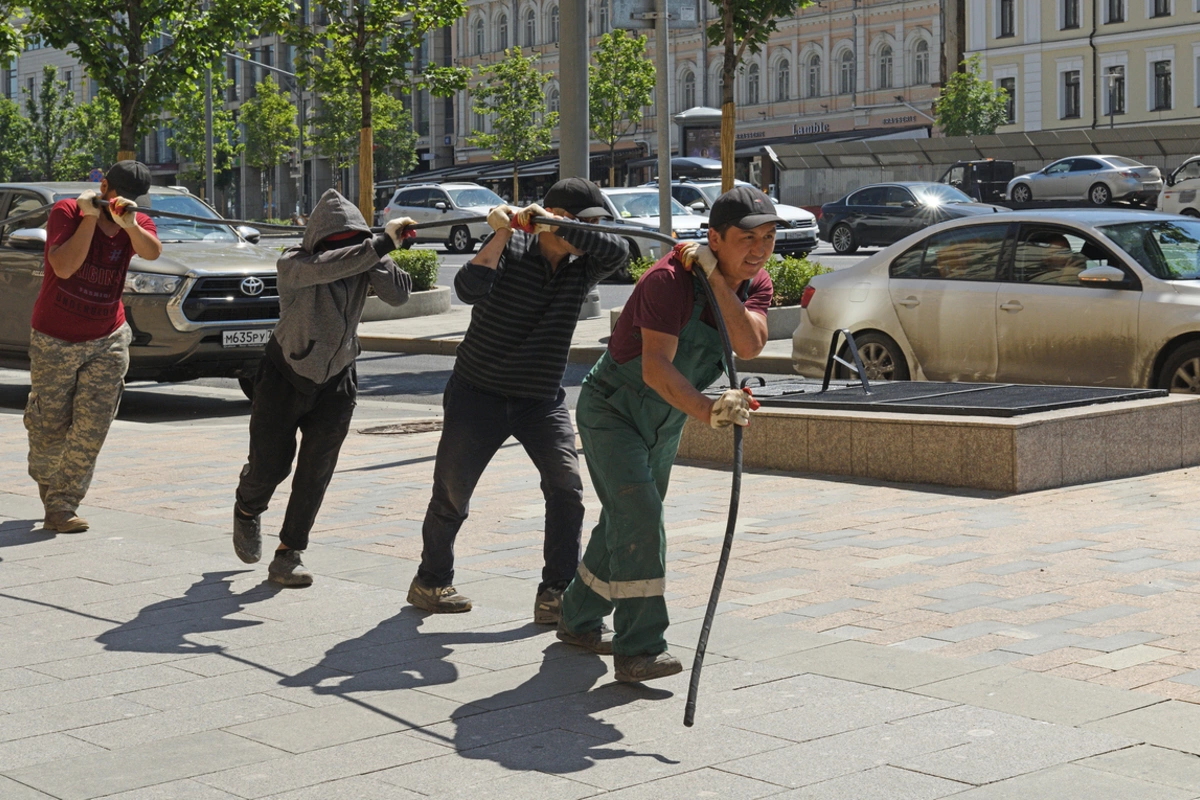
Moscow is looking to South Asia for migrants to compensate for declining numbers of Central Asian migrant workers.
Image: Popova Valeriya/Shutterstock
Original article: Paul Goble, The Jamestown Foundation. Many thanks to The Jamestown Foundation's Eurasia Daily Monitor for their collaborative spirit.
Executive Summary:
Moscow hopes to escape a demographic, economic, and security crisis by attracting new immigrants from India and other South Asian countries. The success of such a policy faces enormous obstacles. Given the dimensions of the problems in the Russian Federation, however, the Kremlin has little choice but to attempt this plan. The country’s demographic decline will accelerate if it fails. Demographic decline could ultimately compel the Russian authorities to change course, forcing the country to become less repressive at home and less aggressive abroad. Such possibilities are already animating many in Moscow’s expert community and are likely to be on the minds of Russian President Vladimir Putin and other Russian leaders. This may also explain why Putin appears to be taking larger risks. He and his advisors do not see a way forward in the future short of a deus ex machina, such as a radical change in the leadership in the West, and thus believe they have to achieve their goals now rather than over the longer term.
Russia now faces a plethora of demographic crises, some reflecting underlying trends, others the direct result of Putin’s current policies and the attitude of the Russian population. While “demography is destiny” typically only in the long term, the Russian case may be an exception. Urbanization and the lack of hope for the future among its people have driven the fertility rate to below 1.5, far below the approximately 2.2 needed to maintain the population at its current level. Not only has this created a labor shortage at home, but it has made it more difficult for Moscow to raise troops for its campaign in Ukraine and security forces for its control at home. Until the last few years, the Russian authorities have been able to compensate for this decline by relying on immigration from Ukraine and other Slavic countries, but they no longer can. Immigration from Ukraine has disappeared, Central Asians are going home, and the Russian birthrate is falling despite Putin’s claims to the contrary. Some Russian demographers suggest that the country’s population is now on track to fall by 50 percent by 2100. The pandemic, the war in Ukraine, and the growing hostility of Russians to immigrants from Central Asia have intensified and driven immigration into Russia over the last two years down to under half of what it had been before the beginning of 2022.
Some in Moscow are now pressing for the Russian government to look to India and other South Asian countries as new sources of immigrants. Talks about this began in earnest a year ago, but in recent weeks, Russian experts and their Indian counterparts have discussed the prospect further. There are three reasons for this besides the broader demographic pressures. First, these people say that Indians, in particular, have a long history of going abroad to earn money in Middle Eastern countries and could easily be persuaded to come to Russia. Second, while South Asians are more culturally dissimilar to Russians than Central Asians are, many speak Russian and aspire to Russian citizenship. This is an advantage, as Indian migrants elsewhere seldom seek citizenship in the countries where they travel for work. Third, these commentators say that Indians have the reputation of being both hardworking and law-abiding, and supposedly, they would cause far fewer problems in Russia than Central Asians do now.
These arguments do not account for the obstacles Moscow now faces on the home front. The risks of growing unrest among Russians that attract new immigrants, who are not as culturally compatible with Russians as Central Asians, increase under this plan. Recent polls show that 54 percent of all Russians and more than 70 percent of residents in Moscow want to limit rather than expand the influx of migrant workers. There have been anti-immigrant protests nationwide, most recently two weeks ago in the Sakha Republic (Window on Eurasia, January 27). A new influx would likely spark more such actions and even generate the formation of additional anti-immigrant Russian nationalist squads, many of which currently consist of Ukraine War veterans. This trend undermines Moscow’s control over the use of force within the country.
Moscow has resisted calls to limit or even end immigration, as unpopular as that stance is becoming. This is because the Kremlin needs immigrants not only as workers but as soldiers for its war in Ukraine. The Kremlin continues to insist that the Russian economy cannot survive without migrants and to draft immigrants into the Russian army for service in Ukraine, even though such actions are prompting many Central Asians to go home, drying up new immigration from Central Asia, and inflaming anti-Moscow attitudes among not among only the declining number of immigrants who do remain. Russia’s Muslims and Central Asia see themselves as targets as well, leading to dangers that the arrival of Indian immigrants could intensify.
Putin shows little interest in changing his repressive and aggressive policies. Therefore, The Kremlin will likely choose some version of the Indian migrant plan to put off a day of reckoning. That may not be the way out it hopes for. On the one hand, if Moscow promises not to draft Indian nationals into the war, it will likely further antagonize the remaining Central Asians and cause far more of them to go home than Russia can hope to compensate for by attracting some from India. On the other hand, as more Indians learn about conditions in Russia, word will return to India, and even fewer Indians will choose to move to Russia. The powers in Moscow are undoubtedly aware of these risks. Still, they are likely to follow Putin into a risky situation in the short term, hopeful that even a small new flow of immigrants will give them enough time to achieve his ends.
Share on social media
